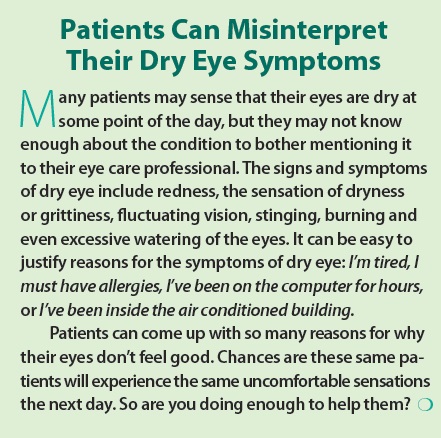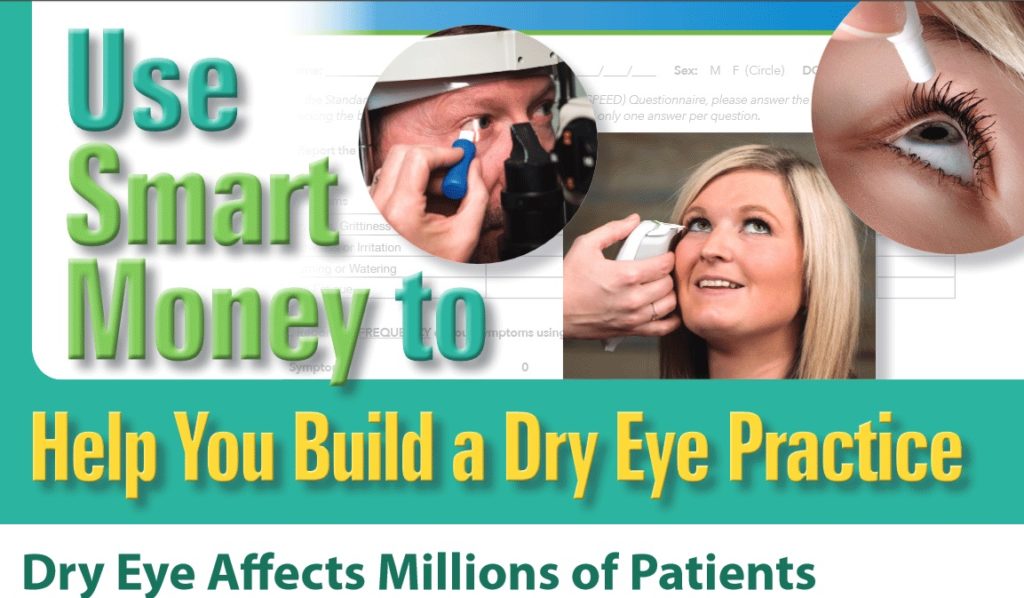Sponsored Content
Is your practice helping them access the products and services they need?
More than 30 million people in the U.S. suffer from some signs and symptoms of dry eye. The multifactorial disease is more than a nuisance condition.1 Indeed, many patients don’t realize that there is more than one kind of dry eye. Evaporative dry eye is different from underlying Meibomian gland dysfunction, and the treatments are different. There might be inflammation that needs to be treated, too.
 For years, the conventional wisdom stated that dry eye was a factor of aging. It is true that the prevalence is high in post-menopausal women, but that is far from the only group that experiences dry eye.
For years, the conventional wisdom stated that dry eye was a factor of aging. It is true that the prevalence is high in post-menopausal women, but that is far from the only group that experiences dry eye.
In fact, many eyecare professionals have noted an increasing percentage of younger patients who complain of dry eye symptoms.1 The ubiquity of computer and device screens is often a factor for students and professionals who may stare, without blinking, at their screens for hours on end.
Environmental factors, such as climate-controlled buildings and cars, as well as windy or dry weather, can play a role. Some medications exacerbate dry eye symptoms, as might contact lens wear for some patients. Allergies and age are factors, too.
The good news for patients and providers alike is that there is an increasing awareness about dry eye and the treatments available for it. Patients do not have to instill artificial tears continuously throughout the day for short-term relief. Practitioners can provide them with helpful suggestions that are essentially free—such as blinking more and refocusing on other objects periodically while working on computers and devices—as well as recommending newer technology contact lenses for greater comfort, and medications to address the inflammation or underlying factors if those remedies are more appropriate for the patient.
Some of the new technologies and procedures, however, are often not covered by insurance and may provide patients with significant relief but at a higher price. Here’s where accepting CareCredit credit cards can help. The goal of this installment of Smart Money is not to provide clinical guidance for the management of dry eye patients, but to illustrate the value and importance of helping these patients access the services they need to live a more comfortable life.




























